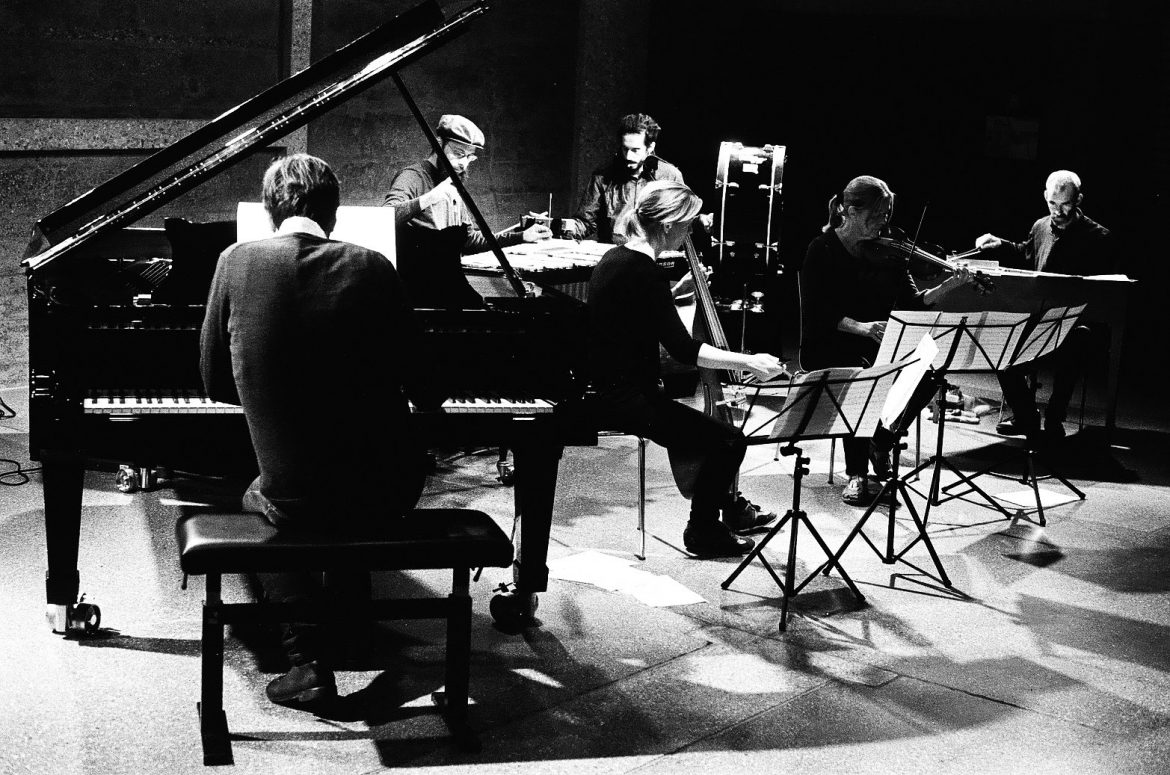Towards the end of summer 2017, Cyril Bondi and d’incise organised a week-long residency at the Fondation l’Abri in Geneva. So far, at least two recordings from the residency have found their way to public release: a live recording of Magnus Granberg’s ‘Es schwindelt mir, es brennt mein Eingeweide’ from the week’s final concert, appearing on Another Timbre, and two versions of Bondi and d’incise’s own composition ‘kirari-kirari’ on Edition Wandelweiser. Performing alongside the three composers were Anna Lindal on Baroque violin, Anna-Kaisa Meklin on viola da gamba, and Christoph Schiller on spinet, all of whom previously participated in the recording of Granberg’s ‘How Deep Is The Ocean, How Wide Is The Sky’. Since both albums emerged from the same residency, I thought it made sense to consider them together.
A common trait of Granberg’s music is an apparent flatness that belies a great deal of complexity. According to an interview on the Another Timbre website ‘Es schwindelt mir’ uses fragments of a song by Franz Schubert, arranged into seven ‘pools’ from which the performers are free to choose at various points in the piece. At times I’m aware of changes in the music — changes in density or intensity, or changes from bowed to plucked or struck sounds, or between different percussive timbres; or to be more exact, I’m aware that something has changed, the actual transition itself being so subtle as to be imperceptible. The prevailing impression, however, at least for me, is one of continuity, of a single moment unfolding over an extended duration, calmly and without drama, almost lulling or drifting but still very much present and affective. I would like to be surrounded by this music, to sit in the middle of the ensemble and hear their pin-sharp plinking and plonking sounds all around me, as if in an auditory cyclorama.
Bondi and d’incise’s ‘kirari-kirari’ also comes across as sort of flat, but in a different way. The ensemble play repeated notes in unison, averaging maybe a note every four or five seconds, at a regular pace. Each repeat is the same, and each is slightly different, owing to subtle shifts in tone and timing. Change comes through shifts in orchestration and dynamics, with quieter sections seeming to slow in tempo (I can’t quite work out whether this actually occurs or is just an illusion created by the change in volume, and if the former whether it is intentional or not). In the first twenty-minute version on the album the players change the pitch of their note or the timbre of their percussion strike several times, moving from high to low or from freely ringing to muted; in the second version each instrument seems to keep the same pitch throughout, with only changes in orchestration bringing about shifts in harmony. If you’re thinking that this sounds like a form of Chinese water torture, this can sometimes be the case, depending on the mood and energy levels of the listener; at other times it’s a strangely compelling listen, as meditative as a steadily repeated mantra.
These two recordings, made during the same week, differ greatly in their respective approaches; yet they share a sense of blankness, of indifference to drama and hyperbole, that makes them equally elusive and hard to describe. If ‘Es schwindelt mir’ seems to offer a single timeless image, a single moment of unfolding presence, ‘kirari-kirari’ is a potentially endless reproduction, the same scene photographed again and again and again. Each has something interesting to say — or perhaps better, to show — about the times and spaces of music.

